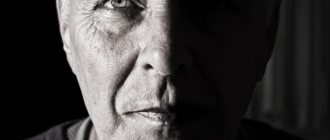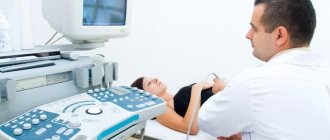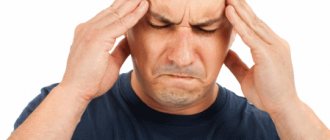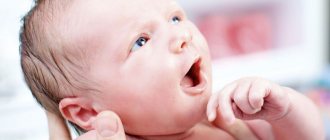Types of fainting conditions
Modern medicine distinguishes several types of fainting conditions. The development of such a pathology presupposes the presence of factors that influence the functioning of the human body, and may indicate painful processes in internal organs and mental disorders. In addition to unconsciousness with convulsions, fainting is divided into:
- simple. Before a complete loss of consciousness, a person feels absent-minded and slightly clouded in his mind. Fainting is short-term, accompanied by a drop in blood pressure and shallow breathing;
- drop attacks. They are characterized by a sudden fall of a person, accompanied by weakness and dizziness. It occurs in people with cervical osteochondrosis and pregnant women. This type can be classified as a semi-fainting state, since there is no complete loss of consciousness;
- bettolepsy (cough fainting). They appear in chronic lung diseases after paroxysms of severe coughing. An attack provokes a large outflow of blood from the brain, resulting in fainting;
- vasodepressor. They are mainly observed in children due to emotional stress, fatigue, lack of sleep, etc. It is necessary to consult a specialist to exclude possible pathologies of the nervous system;
- orthostatic. Associated with a sharp change in the position of the human body (from horizontal to vertical). The circulatory system does not have time to supply the brain with sufficient oxygen;
- arrhythmic. They appear as a consequence of cardiac arrhythmia in people suffering from cardiovascular diseases.
At the first signs of dizziness, weakness and slight blurred vision, doctors advise you to immediately sit down, or better yet lie down, to avoid a traumatic situation.
Diagnostics
After first aid has been provided for fainting and loss of consciousness, and the person has regained consciousness, it is necessary to analyze the symptoms that may appear.
It is worth paying attention to:
- Shortness of breath and chest pain.
- Wave-like tachycardia more than 160 beats per minute.
- The appearance of profuse sweating.
- Low blood pressure that persists when lying down.
- Very slow heart rate, less than 45 beats per minute.
Fainting and loss of consciousness can pose many dangers. The difference between the developing consequences depends on many factors and the presence of certain diseases in the body. For example:
- Fainting in diabetes mellitus, caused by a sharp decrease in blood sugar, can progress to a coma.
- In case of carbon monoxide poisoning, the victim loses consciousness, brain hypoxia occurs, and myocardial muscle contraction is inhibited.
- Loss of consciousness after or during physical activity is a signal of serious cardiac pathology.
- There is a high probability of heart pathologies in older people during loss of consciousness.
- Severe heart disease is indicated by interruptions in its work and the time before fainting exceeds 5 seconds.
- If you lose consciousness, convulsions that appear may indicate not only epilepsy, but also cerebral ischemia caused by heart disease.
- If a person has cardiovascular pathologies, then loss of consciousness should be considered as a very serious symptom.
- If the patient has had a heart attack and has angina, cardiomegaly, and symptoms of insufficient blood supply, fainting can be fatal.
We invite you to familiarize yourself with: What are seizures and why do they occur? The main signs of their occurrence are prevention and therapy.
In case of short-term loss of consciousness or fainting, it is necessary to undergo examinations to clarify the cause of this condition. Let's look at which ones further:
- To exclude vegetative-vascular dystonia, a consultation with a neurologist is necessary.
- Consultation with a physician is necessary to exclude hypotension or to prescribe therapy for hypertension.
- Ultrasound, ECG, cardiac Holter to detect cardiac pathologies.
- Ultrasound, Dopplerography to study cerebral vessels to identify pathologies.
If there was a loss of consciousness, then the following examinations will be needed:
- A blood test to determine the amount of hemoglobin and red blood cells.
- To examine the lungs, it is necessary to undergo an x-ray.
- Get tested for allergens and visit an allergist if you suspect asthma of allergic origin.
- Undergo spirography to assess external respiration.
It is worth noting that if fainting occurs in a patient under 40 years of age and there are no anomalies on the cardiogram, then it is necessary to look for a neurological cause. If, after 40, there are no signs of damage on the heart cardiogram, it is still necessary to start with a full examination of it.
Interview with an eyewitness to sudden fainting:
- time of day;
- place;
- provoking factor: heat, excitement, pain, change in body position, physical activity, etc.;
- initial body position: standing, sitting, lying down;
- scream;
- skin color: pallor, hyperemia, cyanosis;
- pulse: frequency, rhythm, filling, tension;
- movements: convulsive or voluntary, focal or general;
- injury from a fall, involuntary urination;
- duration of the seizure;
- recovery symptoms: headache, confusion, speech impairment, paresis, etc.
Diagnostic methods:
- taking anamnesis;
- physical examination;
- measuring blood pressure on both arms with the patient sitting, and then measuring blood pressure on one arm (usually on the side with higher blood pressure) while lying down and 2 minutes after being in an upright position (feet shoulder-width apart);
- ECG registration;
- 24-hour blood pressure monitoring;
- methods to judge the imbalance of vegetative influences on the heart and blood vessels: cold test, Valsalva maneuver, tilt test
– cold test: ECG and blood pressure are recorded during local exposure to cold, usually in the hand area;
– the Valsalva maneuver allows one to judge the sympathetic and parasympathetic influences on the blood vessels and heart. During the test, ECG and blood pressure are continuously recorded. In a sitting position, after a shallow inhalation, the patient maintains a pressure of 40 mmHg. Art. into a mouthpiece connected by a tube to a pressure gauge for 15 s.
In the first seconds, blood pressure increases with a decrease in heart rate, then blood pressure falls with an increase in heart rate. After stopping straining, blood pressure continues to fall for several seconds, and the pulse accelerates, then blood pressure rises, and bradycardia occurs. A Valsalva ratio of 1.21 or higher determined by ECG is normal; 1.1 and below – indicates a violation of autonomic influences on the heart;
– tilt test (from English tilt) is carried out on a special rotary table, also with constant recording of ECG and blood pressure;
– determination of baroreceptor sensitivity.
Material tested by Aktion Medicine experts
Provoking factors
Fainting can be caused by various reasons. Basically, loss of consciousness occurs due to:
- mental disorders;
- diseases of internal organs;
- abnormalities of the vascular system, causing disruption of the functionality of the nervous system.
According to statistics, specialists have to deal with the latter type of pathology more often. In this case, age does not matter, and fainting occurs in both adolescents and elderly patients.
However, there are provoking factors that cause short-term loss of consciousness in absolutely healthy people. A neurogenic pressure surge can be caused by:
- stressful situation and severe fear;
- physical trauma with intense pain;
- long stay in a stuffy room;
- overexertion and accumulation of fatigue.
A simple solution to these problems is a good rest, preferably with a change of scenery.
Symptoms
A distinction should be made between the non-convulsive type of pathology and absence epilepsy.
Epilepsy attacks without loss of consciousness and convulsions have symptoms characteristic of psychiatric pathology:
- Darkened consciousness. The person does not understand where he is, what is happening around him.
- Excessively violent manifestation of emotions, often negative. The patient becomes enraged and can cause harm to others, often leading to murder. It can also manifest itself in attacks of pathological joy and, conversely, a depressed state, even to the point of attempts to harm oneself.
- Narrowing of consciousness. A person from the entire world around him perceives only what is emotionally important to him.
- Delusional ideas, often of a paranoid nature.
- Visual hallucinations. In this case, either the surrounding world is painted in frightening tones, or visual images are dictated by fear.
- Speech disorders - verbal hash, meaningless sayings.
Everything that happened during the attack is forgotten. In rare cases, fragmentary memories of the most vivid moments remain.
At the initial stage of the disease, the attack lasts several minutes. If the patient does not fall into a violent state, this is already a dangerous factor that requires immediate seeking help from specialists.
It is impossible to predict the frequency of attacks or the onset of the next one, since a person does not have any warning signs with this type of epileptic syndrome.
In addition to the destruction of personality, non-convulsive epilepsy is dangerous due to its sudden transition to the classic version with generalized seizures and epistatus.
With a sharp, sudden development of the disease in an aggressive form, there is a high probability of going to a psychiatrist and receiving an incorrect diagnosis. This means improper treatment, which can only worsen the course of the disease.
Causes of fainting with convulsions
An attack of fainting accompanied by convulsive contractions of muscle tissue is caused by pathologies in the functioning of the brain. Loss of consciousness occurs due to oxygen starvation and disturbances in the bioelectrical activity of the brain. Fainting is short-lived - from a couple of seconds to 2 - 3 minutes. During attacks based on mental disorders (epilepsy, hysterical seizure), the time of fainting increases significantly.
The main causes of fainting with convulsions in people who do not have chronic diseases are:
- rapid increase in body temperature (up to 40C and above) during infectious diseases. In young patients, the development of convulsive symptoms during hyperthermia may appear at 38 - 39C. Children are characterized by a sudden manifestation of pathology: a sharp tension of the entire torso with throwing back the head and a fixed gaze. Then loss of consciousness occurs with convulsive manifestations;
- state of pregnancy in women. Convulsive fainting is a dangerous complication that causes pathologies in the intrauterine development of the fetus and the likelihood of premature birth. Fainting is similar to a coma and, with frequent attacks, there is a high probability of death;
- alcohol poisoning. When alcohol intoxication becomes chronic, it has an irreversible effect on the functionality of the brain. A seizure with convulsions and loss of consciousness is similar to manifestations of epilepsy and can occur regardless of alcohol intake;
- hematomas in the brain caused by concussions, bruises and head wounds, as well as the presence of tumor formations and increased intracranial pressure.
In adolescence, convulsive fainting occurs due to vegetative-vascular dystonia. In adolescents, the circulatory system does not keep up with the pace of growth and does not provide the brain with sufficient oxygen, which contributes to the development of the disease and frequent loss of consciousness. With a reduced threshold for convulsive activity in a given age period, the child has an increased chance of having seizures at the stage of fainting.
Symptomatic seizures
In addition to epilepsy, loss of consciousness with leg cramps develops in a number of diseases. In this case, seizures have distinctive features.
Although it is difficult to verbally confuse an attack of epilepsy and a fit of hysteria, in the first seconds it is often difficult to navigate. Both conditions are accompanied by loss of consciousness and lack of reaction to what is happening. Remember the important distinguishing features.
Difference between fainting and epileptic seizure
- When fainting, the patient feels weakness, dizziness, ringing in the ears, and palpitations. An epileptic attack occurs in the midst of complete external well-being or after an aura. Sometimes lying down is enough to prevent fainting. With epilepsy, the horizontal position of the patient does not help in any way to prevent a seizure, which can develop at any time in any place.
- Fainting rarely begins when a person is lying down or sleeping. Unlike fainting, an epileptic seizure can develop at rest, even during sleep.
- In case of fainting, the patient will be able to independently report what was the cause - psychological stress, overwork or exposure to physical factors. The causes of an epileptic seizure are not outwardly noticeable; the patient may not associate it with anything.
- The pattern of leg movements during fainting and epileptiform seizures shows differences. When fainting, there may be no convulsions at all, or the spasms may be tonic-clonic in nature, alternately contracting and then relaxing. In epilepsy, the tonic phase is replaced by the clonic phase.
- When fainting, loss of consciousness may not occur - the patient is able to remember everything, as if in a fog.
Hysterical attack
With certain personality and character characteristics, increased nervous excitability, a hysterical attack develops, outwardly reminiscent of an epileptic one. A number of differences are described:
- A fit of hysteria develops after a conflict, receiving unpleasant news or a nervous shock. Before the onset of a hysterical attack, the patient is able to scream or cry.
- During a hysterical attack, the patient almost never experiences a deep loss of consciousness. The patient rarely falls, hitting his face on furniture or sharp hard surfaces. Usually the person falls gently to the floor without harming himself.
- The movements of the limbs in a patient with a hysterical attack are different; they do not look like convulsive contractions, but rather like gesticulation, they look somewhat theatrical and pretentious.
- During a hysterical attack, patients are able to tear their clothes, scratch their chest, face, and shout out individual phrases.
- A hysterical attack is not characterized by tongue biting, urination, or facial injuries.
- The duration of a hysterical attack ranges from 5 minutes to several hours, being a distinctive feature.
- After the attack ends, the patient retains a memory of what happened.
- A characteristic feature is the preservation of the reaction of the pupils to light, which does not happen during an epileptic attack.
First aid for seizures due to loss of consciousness
A person who has fainted needs immediate help. Providing first aid for convulsions against the background of loss of consciousness occurs according to the classical scheme used for ordinary fainting with some nuances. To alleviate the plight of the victim, you should:
- to ensure the flow of blood and oxygen to the brain - lay horizontally, raising your legs above head level;
- to prevent tongue retraction, turn your head;
- to prevent a traumatic situation during severe convulsions, hold it carefully, having previously removed piercing and cutting objects away;
- for free access of oxygen - open the windows, unfasten constricting items of clothing (collar, belt);
- for “resuscitation” measures - slap the cheeks, rub the earlobes, sprinkle the face with cool water. If available, give ammonia a sniff;
When the convulsive seizures ease and recede, the victim should be left alone for half an hour; a sudden rise immediately after the attack is not recommended.
Repeated repetition of this condition is a reason for mandatory consultation with a doctor.
Symptoms and signs of epilepsy in adults
The chronic disease epilepsy is classified as a neuropsychiatric disease.
It occurs latently, but often with periodic attacks, which are called epileptic seizures. It is impossible to prepare for a seizure - it occurs suddenly. The cause is excitement, which affects many parts of the brain at once. With epilepsy, symptoms in adults can be quite different. It all depends on what functions the “excited” neuron performs. For example, if we bend our arm with its help, then at the moment of an attack the patient will begin to bend and straighten his arm many times against his will. The seizure can be short - a few seconds, and quite long - several minutes.
The frequency of occurrence is different for each patient. It is very important to monitor the frequency of seizures: the more often they occur, the more consequences they leave.
Damage to neurons and connections between brain cells gradually leads to the appearance of symptoms between epileptic seizures - a person’s behavior changes, previously unnoticed character traits become aggravated, and the speed of thinking decreases.
Common signs of epilepsy in adults:
- violations of movement coordination;
- speech problems;
- increased muscle tone;
- mental problems.
These and other symptoms may appear in combinations.
During epilepsy, signs and symptoms in adults depend on the type of seizure. There are partial and generalized seizures. Partials are also called local/focal.
The cause of their occurrence is an epileptic focus operating in one of the two cerebral hemispheres. The lesion can be identified using the electroencephalography procedure.
The types of seizures differ from each other in the external signs of epilepsy in adult men and women. As a rule, one person suffers from seizures of the same type and with the same symptoms: motor, speech, mental. But as the disease progresses, if it is not treated, other signs may appear, but the previous ones will not disappear.
Symptoms of partial seizures
One of the signs of epilepsy in adults, when it comes to the partial type of seizures, is loss of consciousness. But this doesn't always happen. If the patient was conscious during the attack and felt what was happening, then they speak of a simple partial attack.
Manifestations may be as follows:
- motor. The first signs of epilepsy in adults in this case are muscle tremors, which can occur anywhere - on the stomach, hands, face. A person involuntarily turns his head to the side several times, the same thing happens with his eyes. May suddenly shout a word and make a sound if the laryngeal muscles contract. It happens that after muscle tremors in one part of the body, tremors appear in the rest, soon the process of muscle contraction covers the entire body and the person falls unconscious. In medical language, such attacks are called Jacksonian (motor with march) with secondary generalization;
- mental. They are characterized by disruptions in thinking and memory, which also occur suddenly. For example, a patient may suddenly become scared, but very well. It may seem to him that he has already seen the unfamiliar environment in which he is currently located before. While talking with an interlocutor, a person who has had a partial mental attack may suddenly forget for a short time and not recognize who is in front of him, but then remember and return to the conversation as if nothing had happened. In the same way, the patient may suddenly lose orientation in his own room or apartment. Hallucinations often occur: lightning flashes before the eyes, the hand increases in size, seems redundant, and so on. Since the person is conscious, after the end of the attack he can tell what he saw, heard and felt;
- sensory. The first signs of epilepsy in adults in the event of a sensory partial seizure are a burning sensation and pricking sensation on the skin, a feeling as if an electric current had passed through the body, strange sounds in the ears (cracking, loud noise, ringing), the appearance of a taste in the mouth, a smell, when in fact in fact there is nothing odorous nearby. These attacks may be accompanied by a march followed by generalization. Often a person loses consciousness;
- vegetative-visceral. In this type of epilepsy, signs and symptoms in adults include the appearance of a feeling of empty space inside the abdomen, in the upper part, and movement of organs from place to place. It happens that the patient suddenly turns red, salivates, his heart beats strongly, his blood pressure rises, and he is very thirsty.
Loss of consciousness indicates a complex partial seizure. But it is not at all necessary for a person to fall with his eyes closed.
He may suddenly freeze and begin to pronounce the same word, phrase, or even a whole sentence; swallow incessantly; chew with lips, make sucking movements; wave your hand, lift it, straighten and bend your fingers, and so on.
It is impossible to bring him out of this state either with words, or with light, or with touches - there is no consciousness. When the seizure ends, the patient comes to his senses on his own, but he does not remember anything that happened a second ago.
Some complex partial seizures last several hours, sometimes days.
Outwardly, the signs of epilepsy in adult men and women in this case may not be noticed by others: it seems that the person is walking, lost in thought, along the road, even waiting for a green traffic light, calmly having lunch and changing clothes at home, and simply looking slightly distracted. This behavior is similar to the behavior of “sleepwalkers.”
Any type of partial seizure can provoke secondary generalization, when the entire brain is involved in the process: convulsions begin, the person loses consciousness. But before that, he feels something known and understandable only to him, the so-called aura.
It lasts only a few seconds/minutes, but during this time the patient, who understands that an attack is about to begin, can have time to prepare a little: lie down, remove sharp and hard objects from himself, get off the escalator.
Unfortunately, it is impossible to escape from the attack itself.
What are generalized seizures characterized by?
It doesn’t matter whether this is the tenth or the first attack of epilepsy in adults, it is invariably accompanied by loss of consciousness - this is the main characteristic of a generalized seizure. The person will not be able to remember what happened.
Symptoms vary depending on the type of seizure:
- absence seizure If in this type of epilepsy the only symptom in adults is a sudden loss of consciousness (for a few seconds), then they speak of a simple form of absence seizure. Consciousness is not accompanied by a fall, a person simply freezes in place, no matter what he does - talking, walking, eating, and later returns to life again. If, in addition to this, there are other signs, including sudden urination, rolling of the eyes, repeated licking of lips, showing gestures, rapid breathing, increased heart rate, then complex absence seizure can be diagnosed. In this way, this seizure is similar to a complex partial one, and they are often confused even by experienced doctors. Only electroencephalography will give an accurate answer;
- myoclonic. Its symptoms: muscle contractions of increased strength: a person sits down and stands up sharply, waves his arms, kneels, throws his head back, shrugs his shoulders;
- tonic. Muscle cramps continue from 5 seconds to half a minute. The patient bends his arms, legs, neck, and entire body;
- tonic-clonic. The most common type of epileptic seizure, the causes of which can be lack of proper sleep, too much alcohol, or severe overexcitation. Even during the first attack of epilepsy in adults, a sudden loss of consciousness occurs with a fall. Then the convulsions begin. First, tonic ones occur (screams, sounds due to laryngeal muscle contractions, this leads to biting the tongue with teeth, arching of the whole body), which last a maximum of half a minute. They are followed by clonic (limb spasms), which last approximately 1-2 minutes. Other symptoms: the face turns blue and red at the same time, the heart beats quickly, blood pressure rises, foam appears on the lips (if a person bites his tongue or cheek, the foam mixes with the blood). After a seizure, everything returns to normal: the muscles weaken, the person breathes loudly and freely, and falls asleep. Sleeps from a few seconds to many hours. After waking up, at first he does not understand what happened, who he is, what day and year it is on the calendar. Later the memory is restored. He cannot remember what happened to him, but he feels pain in his head, muscles, and weakness;
- clonic. Happens rarely. Similar to a tonic-clonic seizure. The only difference is that the first stage is missing;
- astatic/atonic. The patient suddenly experiences a decrease in muscle tone in one part of the body. If it is in the jaw, then it hangs, and the patient himself freezes motionless for several seconds/minutes. If it is in the neck, the head falls sharply onto the chest, and the patient is unable to lift it. Sometimes he can fall on his own.
These are the symptoms of epilepsy of its different types and types. Determining the type/type is extremely important, since the doctor will only be able to prescribe the correct treatment if he knows the exact diagnosis.
Author (Medical journalist) – Kapylov Sergey
Speciality:
Neurologist, Epileptologist, Functional Diagnostics Doctor 15 years of experience / First category doctor.
Symptoms and signs of epilepsy in adults Link to main publication
Source: https://epi-lepsy.ru/chto-est-epilepsiya/simptomy-i-priznaki-jepilepsii-u-vzroslyh.html
Restorative procedures
In any case, after fainting with convulsions, you need to establish the cause of its occurrence, at least for your own peace of mind. Only a specialist can diagnose the underlying disease and prescribe the necessary therapy.
After a convulsive attack during fainting, muscle pain remains for a long time. To generally strengthen the body, first of all you should slightly adjust your diet:
- eliminate smoking, alcohol and consumption of large quantities of coffee and strong tea;
- drink more liquid, preferably mineral water;
- introduce more dishes from vegetables and leafy greens into the menu, which provide the body with potassium, calcium and magnesium.
A monthly course of Asparkam containing potassium and magnesium is recommended. As well as similar preparations with a sought-after vitamin and mineral composition, more details in the articles:
- Calcium Active - detailed instructions
- Potassium and magnesium aspartate
- Calcium Magnesium Chelate
- Magnesium B6 instructions: Magne B6
- Magnelek: instructions for use
To improve calcium metabolism, you should drink vitamin D. When taking diuretics and steroid hormones, the dose should be reduced.
To quickly recover from fainting with convulsions, muscle massage of the whole body and light exercise in the morning are recommended:
- lying in bed, stretch well and, stretching your legs with muscle tension, pull your toes towards you;
- standing up on your toes, drop sharply onto your heels. Do the exercise for no more than a minute, trying to complete at least 50 movements.
A light morning jog for 10 to 20 minutes will help restore muscle tone. It is necessary that restorative procedures take place regularly until complete rehabilitation.
Treatment of epilepsy without seizures
Different types of epilepsy require different treatment approaches. Depending on the type of epilepsy the doctor is dealing with, he will use different diagnostic methods and treatment options. In some cases, even an accurate diagnosis of epilepsy does not imply the prescription of therapy for the patient. The fact is that treatment must be tailored to each specific case. This means that the doctor needs to take into account all the nuances. Up to the financial capabilities of the patient. Not to mention the fact that all possible risks must be carefully and adequately assessed, since many drugs have a number of severe contraindications and side effects. The form of the attacks should also be taken into account. Patients who have had a mild form of epilepsy without seizures are usually not prescribed medications. Even with an accurate diagnosis. In general, the patient’s condition may cause refusal of drug treatment. Drugs may not be prescribed if a person has had their first epileptic attack and has not experienced seizures, lost consciousness, or performed uncontrollable actions. Seizures of varying duration and frequency are treated with medication, but only if they threaten the patient's health or have a detrimental effect on his life. Non-convulsive seizures that occur no more than once a year are not treated with strong drugs. The success of treatment depends not only on the drug used, but also on other factors. In the treatment of epilepsy it is necessary to be guided by existing general principles and standards of therapy.
- maintaining a healthy lifestyle;
- refusal to drink alcohol, smoke, take drugs; moderate physical activity;
- good nutrition and rest.
It is important to exclude any physical and mental fatigue, stress and emotional turmoil, to ensure the most favorable atmosphere in the patient’s environment. Strict adherence to the daily routine is a guarantee of recovery and well-being. The patient should make a schedule for the whole day, and also take into account the fact that he now needs a full night's sleep. Do not neglect rest, otherwise epilepsy without seizures can develop into a more complex and dangerous form. Not only the patient, but also his loved ones need to work to get rid of all irritating factors. It is important to be attentive to the patient's condition. Sometimes watching from the outside can help avoid a lot of problems. It will not be superfluous to talk and discuss the patient’s well-being. After all, fatigue that does not go away even after rest or sleep, dizziness, and depression can be dangerous symptoms. Treatment of epilepsy without seizures also includes systematic check-ups and examination by doctors. Get the necessary tests, take medications that will reduce the manifestations of epilepsy without seizures. Don't let illness affect your life. Epilepsy is not a death sentence. People with this disease lead full and quite active lives. Attentiveness to oneself, assessment of one’s capabilities and self-acceptance are important aspects for the rehabilitation of a patient with epilepsy. It must be remembered that modern medicine has not stopped searching for the best methods of treating and preventing this disease.












